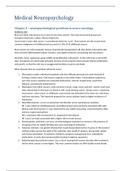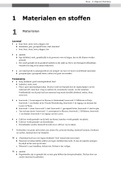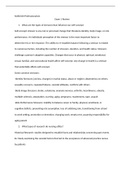Samenvatting
Summary Medical Neuropsychology (Capita selecta)
- Instelling
- Rijksuniversiteit Groningen (RuG)
Extensive summary of all book chapters necessary for the capita selecta course: clinical neuropsychology - medical neuropsychology.
[Meer zien]














